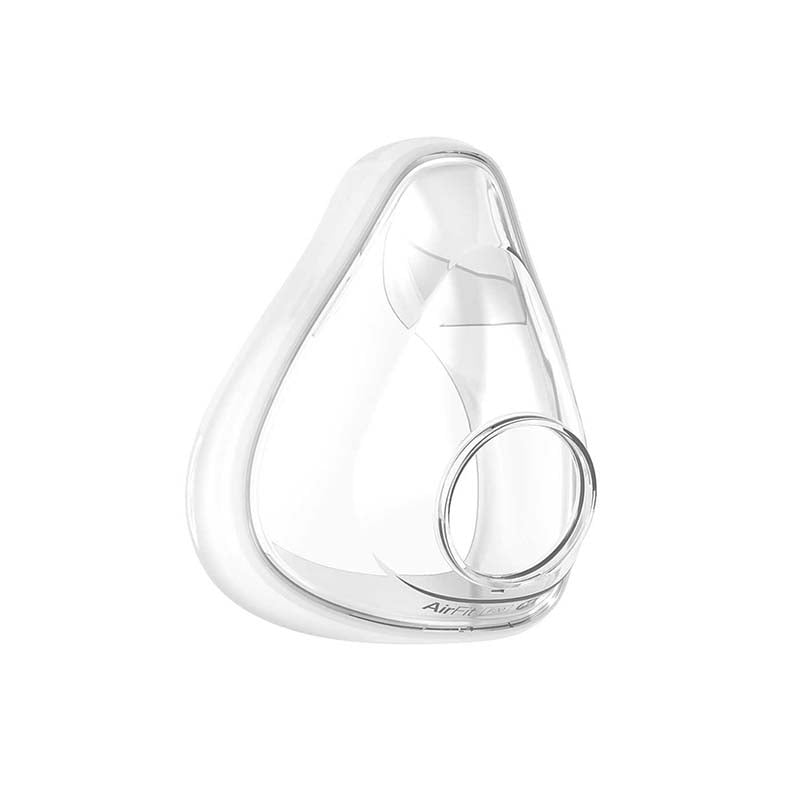Choosing the right CPAP (Continuous Positive Airway Pressure) mask is crucial for effective sleep apnea therapy. Among the top contenders for full-face masks are the AirFit F40 and the Amara View. Both masks are designed to deliver comfort, efficiency, and performance, but the AirFit F40, as a newer option, brings improvements that set it apart from its predecessor. This article will compare the two masks, highlighting their features, differences, and why the AirFit F40 might be the better choice for you.
Amara View: A Trusted Full-Face Mask
The Amara View is a popular option among CPAP users due to its minimalist design and comfort. It stands out from traditional full-face masks by offering a more open field of vision, allowing users to read or watch TV before bed. The mask covers the mouth and sits under the nose, avoiding contact with the nasal bridge, which makes it more comfortable for many users.
Key Features of the Amara View:
- Under-the-Nose Cushion: The cushion rests beneath the nose, which reduces bulk and prevents pressure on the nose bridge.
- Open View Design: Its open-field design enables users to wear glasses and engage in pre-sleep activities, making it ideal for those who prefer a mask without forehead support.
- Soft and Flexible Headgear: The headgear is lightweight and comfortable, providing an adequate seal without causing discomfort during use.
- Easy Magnetic Clips: The magnetic clips allow for easy removal and adjustments, making it user-friendly.
- Wide Compatibility: The mask is compatible with most CPAP and BiPAP machines, offering flexibility to users.
While the Amara View has been appreciated for its comfort and design, some users have reported issues with maintaining a proper seal, especially when they move during sleep. The occasional leaks and pressure discomfort can become a challenge for long-term therapy.
AirFit F40: A New and Improved Mask
The AirFit F40 is ResMed’s newer mask that aims to resolve common issues users face with older full-face masks like the Amara View. Its design is sleeker, more modern, and provides enhanced comfort and performance.
Key Features of the AirFit F40:
- UltraSoft Cushion: The cushion is made from soft silicone, ensuring a snug yet comfortable fit. It reduces the facial pressure that can lead to discomfort and red marks, making it more comfortable for prolonged use.
- Quieter Experience: With an advanced venting system, the AirFit F40 significantly reduces noise, making it ideal for light sleepers or those who sleep with a partner.
- Smaller and Flexible Frame: The frame is compact, offering better movement and less contact with the face. This minimizes skin irritation and allows users to sleep more naturally.
- Secure Magnetic Clips: Similar to the Amara View, the AirFit F40 has magnetic clips, but the design is more intuitive and easier to handle.
- Better Fit for All Face Types: The AirFit F40 comes in various sizes, ensuring a better fit for different facial shapes and sizes. This customizability makes it easier to maintain a secure seal with minimal adjustments.
Why the AirFit F40 is the Better Option
While both masks are designed for comfort and efficacy, the AirFit F40 excels in several critical areas that make it a superior option:
- Enhanced Comfort: The UltraSoft cushion in the AirFit F40 offers a more gentle and secure fit, reducing facial pressure and discomfort during the night. Users report fewer skin irritations and a more relaxed sleeping experience.
- Improved Seal: The mask’s design is more advanced, allowing for better movement without losing the seal, even for restless sleepers. This helps prevent the leaks that some users experience with the Amara View.
- Noise Reduction: The AirFit F40 is quieter compared to the Amara View, thanks to its improved venting system. This ensures a more peaceful sleep environment for both the user and their partner.
- Sleeker Design: The AirFit F40’s smaller frame is less obtrusive, making it easier to adjust, clean, and maintain. It’s also aesthetically more appealing for those who prefer a minimalistic look.
- Longevity: The materials used in the AirFit F40 are designed for durability, making it a long-lasting option for CPAP users who need consistent and reliable performance.
Which Mask Should You Choose?
- Amara View: This mask may be suitable for those looking for a simple, cost-effective full-face mask with a minimalist design. If you wear glasses or enjoy watching TV before bed, the open field of vision provided by the Amara View could be a big plus. However, you may encounter issues with sealing if you move around a lot in your sleep.
- AirFit F40: If comfort, a secure fit, and quiet performance are your top priorities, the AirFit F40 is the superior choice. Its advanced cushion, quieter operation, and durable design make it ideal for long-term CPAP therapy. While it may come at a higher price point, the benefits it offers in terms of comfort and performance make it worth the investment.
Conclusion
Both the Amara View and the AirFit F40 have their own strengths, but the AirFit F40 takes the lead with its advanced comfort, better seal, and quieter performance. If you’re currently using the Amara View and are looking for an upgrade, the AirFit F40 is certainly a mask worth considering. Its enhanced features make it a clear choice for anyone seeking to improve their CPAP therapy experience, ensuring better sleep quality and comfort.
In the end, the best mask for you will depend on your specific needs, but for most users, the AirFit F40 offers a significant leap forward in CPAP technology.


















